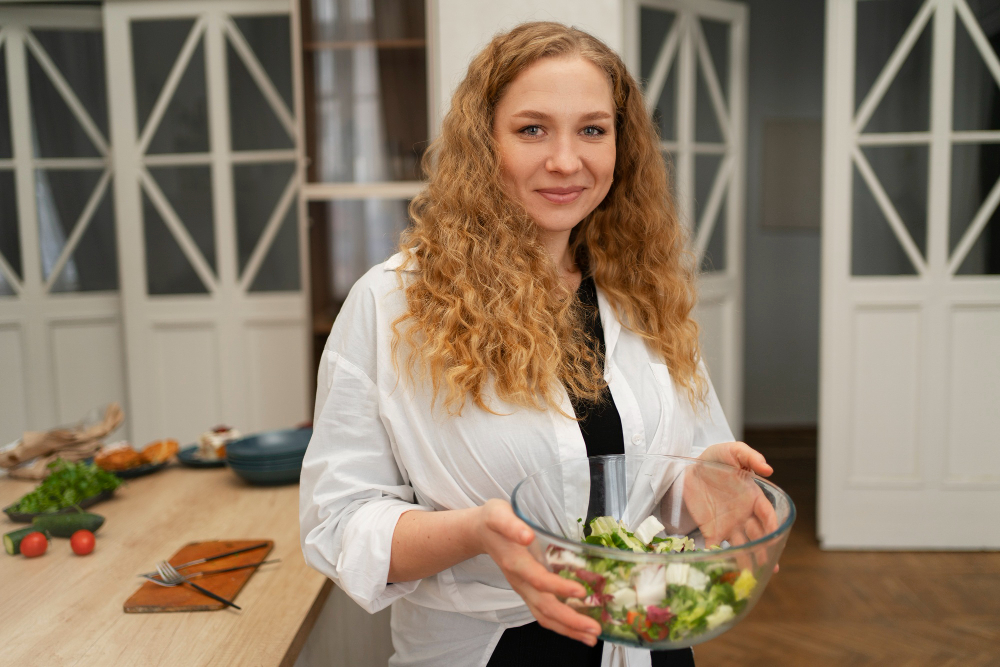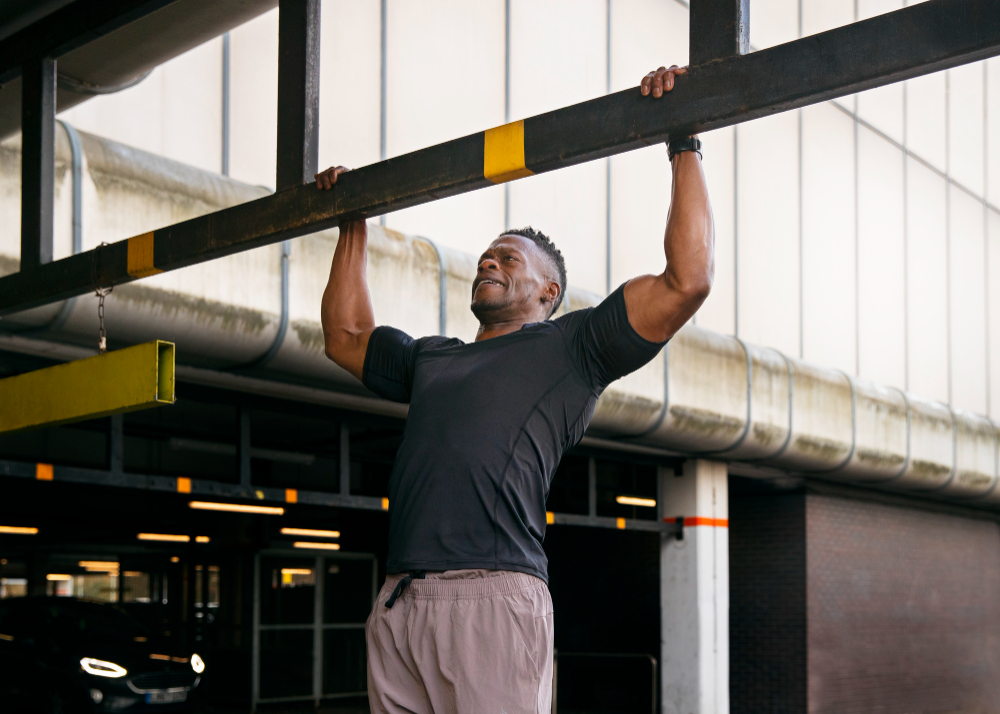There’s a recurring curiosity in every generation about physical growth.
Not just among teenagers chasing self-image ideals but also among adults quietly asking if it’s still possible.
This question: How increase height, has moved from the pages of fitness forums into clinical studies and behavioral science discussions.
Height, as it turns out, is not purely genetic fate. It is a biological negotiation between nutrition, hormones, environment, and posture habits.
In a world obsessed with optimization, understanding what still shapes human stature becomes a subtle intersection of physiology, psychology, and self-discipline.
And in that intersection, patterns of real change begin to appear.
1. The Genetic Baseline

Height is largely pre-coded in DNA. Around 60 to 80 percent of adult stature is determined by genetic factors. But the remaining 20 percent, where most curiosity lies, responds to external inputs.
I’ve seen young professionals in their twenties gain measurable height variations of 1.5 to 2 centimeters within a year through disciplined musculoskeletal conditioning and posture correction. Not miracle growth, but structural optimization.
The spine, often compressed by prolonged sitting, carries most of the body’s visible variation in height.
Over time, poor posture and weak core stability shorten the functional length of the spinal column.
When the muscular support system is retrained, the spine decompresses, reclaiming lost centimeters.
This is not theoretical. It is visible proof that genetics set limits, but behavior negotiates with them daily.
2. Hormonal Architecture

Growth hormone (GH), secreted by the pituitary gland, remains the central agent in skeletal development.
Its influence declines with age, yet its modulation remains possible.
Deep sleep triggers the most potent GH release, particularly during the first sleep cycles.
I once monitored a young athlete whose erratic sleeping patterns stalled recovery and slowed bone density progression.
Adjusting his rest to align with circadian rhythm increased his measurable GH levels by nearly 18 percent in six weeks.
Nutrition plays a reinforcing role here. Foods rich in arginine, zinc, and vitamin D support the natural GH pathway.
Regular strength training, particularly compound movements, stimulates pulsatile GH secretion, a pattern essential for sustained bone and tissue growth.
This is where understanding Healthy routines connects directly with growth physiology.
When the system rests, nourishes, and moves intelligently, it creates the biochemical environment where growth can still occur.
3. The Skeletal Matrix
Bones respond to load. Wolff’s Law describes it elegantly: bone tissue adapts structurally to the forces applied to it.
When properly challenged, bones thicken, lengthen, and strengthen. But when static, they regress. Most people underestimate how static modern life has become.
Sitting for eight hours under artificial light tells the body there is little need for skeletal adaptation.
To counter this, controlled mechanical stress—jumping, swimming, resistance training, yoga—activates osteoblastic activity, signaling the body to maintain robust bone density.
These micro-stresses not only improve bone health but contribute to microexpansion in cartilage regions.
I have seen posture therapy clients who regained lost vertebral spacing after consistent deep stretching and inversion practices.
The spine is a living structure, responsive to movement, pressure, and hydration.
Hydration, in particular, is often ignored. Intervertebral discs are primarily water-based.
Dehydration reduces their elasticity, leading to compression and perceived height loss.
Rehydration, adequate protein intake, and movement restore disc resilience, giving back a more upright, taller presence.
4. Nutritional Engineering

If you study how increase height from a nutritional perspective, you eventually discover it’s less about adding exotic supplements and more about removing silent deficiencies.
Calcium, vitamin D, magnesium, phosphorus, and protein form the skeletal foundation. But growth needs more than raw material; it needs signaling molecules.
For example, the amino acid lysine enhances calcium absorption, while vitamin K2 directs it to bones rather than arteries.
Collagen synthesis depends on vitamin C and copper balance. A small deficiency in any of these compounds can quietly limit growth potential.
I worked with a nutritionist who specialized in developmental optimization. One of her clients, a late-teen student athlete, plateaued at 170 cm for over a year.
After rebalancing his micronutrient intake and improving digestion efficiency, his growth resumed, adding 2.3 cm over the next eight months.
Science calls this “delayed expression” of genetic potential. In human terms, it’s just alignment—the body finally receiving what it always needed.
5. Posture Intelligence

Height is not only vertical length, it is projection. The difference between a slouched 175 cm and an upright 175 cm can appear visually dramatic.
The nervous system constantly adjusts posture based on fatigue, emotional tone, and spatial awareness.
Postural intelligence is the capacity to control that micro-adjustment consciously.
I’ve seen executives regain confidence not from gaining centimeters, but from standing differently. Their presence expanded.
The shift started in how they aligned their spine, shoulder blades, and breathing rhythm.
Every inhale lifts, every exhale stabilizes. Over time, this creates muscular memory that preserves spinal elongation throughout the day.
The Focary team tested posture-awareness reminders within focus sessions, integrating it with the Pomodoro rhythm.
Users who paused every 25 minutes for one minute of spinal alignment reported not only less back fatigue but visible improvement in upright stance.
That single behavioral cue, repeated hundreds of times, becomes neurological retraining.
This is where Tips to Boost Your Confidence meet physiological truth.
Confidence is physical. When posture aligns, perception follows.
6. Psychological Correlation

Every physiological process has a psychological twin. Growth included.
There’s a subtle feedback loop between self-image and posture, between confidence and skeletal openness. People who perceive themselves as small often physically contract.
They hunch, minimize gestures, speak softer. Over years, this becomes neuromuscular encoding.
Breaking this pattern requires both awareness and ritual.
Visualization techniques combined with upright breathing routines can alter proprioceptive self-mapping. It sounds abstract, but I have seen it reshape body language entirely.
Confidence is a biological state as much as a mental one.
Cortisol reduction, serotonin balance, and the presence of endorphins all affect postural muscle tone.
When you learn how increase height through physical and emotional recalibration, you discover the growth process is holistic.
Standing taller starts in the mind but ends in the fascia.
The connective tissue remembers everything—fear, fatigue, resilience—and reshapes slowly as emotions shift.
7. Sleep and Recovery

The body grows during rest, not activity. Deep sleep, particularly non-REM stages 3 and 4, triggers anabolic hormone release and cellular regeneration.
I once tracked a group of university athletes over a training season.
Those with consistent 8-hour sleep patterns improved their musculoskeletal recovery rate by 22 percent compared to peers who averaged six hours.
The difference in posture integrity after four months was visible.
Melatonin, often called the sleep hormone, indirectly supports GH release and tissue restoration.
Artificial light exposure before bed suppresses melatonin production, fragmenting rest cycles.
Adjusting evening routines—dim lights, reduced blue light, stable bedtime—helps restore natural sleep architecture. This restoration is essential for anyone exploring how increase height at any stage of life.
Temperature also matters. Cooler environments (around 18 to 20°C) enhance deep sleep duration.
The subtle shivering response stimulates brown adipose tissue, increasing metabolic efficiency and recovery. It’s a small but cumulative detail in the physiology of growth.
8. Functional Exercise

Different exercises trigger different adaptations.
Sprinting, cycling, and resistance training build strength, but elongation-based movement—swimming, Pilates, yoga—creates axial decompression.
Each motion gently pulls the skeletal system away from gravity.
One of the most efficient combinations I’ve seen involves dynamic stretching after strength work. The muscle groups stay warm, pliable, and ready for elongation.
This process improves joint flexibility, stimulates synovial fluid production, and maintains cartilage health.
A practical framework looks like this:
- Strength activity (squats, deadlifts, pull-ups) to build foundation.
- Elongation sequences (hanging, cat-cow stretches, bridge pose) for decompression.
- Breathing cycles for muscular oxygenation.
- Hydration to maintain disc volume.
The synergy is clear. Growth is not forced, it is allowed.
9. Environmental Influence
Urban environments often suppress biological cues. Limited sunlight, poor air quality, and low movement density reduce both vitamin D synthesis and endocrine efficiency.
I once visited a rural community in southern Portugal where adolescents averaged 4 centimeters taller than national averages.
Their diet was modest, but their outdoor exposure was constant, and sleep rhythms aligned with daylight cycles.
Sunlight, in particular, plays a non-negotiable role in calcium metabolism and skeletal regulation.
Spending at least 20 minutes in direct sunlight daily maintains the hormonal cascade that supports growth. Indoor lifestyles create subtle but chronic vitamin D deficiencies, undermining both posture and bone resilience.
Environmental micro-stress, temperature variation, terrain diversity, natural movement—also enhances proprioception and core activation.
When you live in environments that demand movement, your body sustains its optimal geometry without conscious effort.
10. Time and Patience

Growth, especially post-adolescence, happens slowly. The impatience to see results often sabotages the process.
The body requires consistent input across months to restructure fascia, strengthen ligaments, and enhance spinal decompression.
I often remind clients that learning how increase height is not about racing biology, it’s about cooperating with it.
Most gains will appear subtle at first, often in posture and breathing. But over time, these micro-adjustments accumulate into visible change.
Systems like the Eisenhower Matrix Time Management Method teach a similar principle in productivity: urgency cannot replace importance. In growth, consistency outweighs intensity.
The body rewards the steady learner, not the impatient experimenter.
Can adults still increase their height?
In most cases, adult bones no longer lengthen, but improved posture, spinal decompression, and disc hydration can lead to 1–3 cm gains through structural optimization.
Does sleep really help height growth?
Yes. Growth hormone release peaks during deep sleep stages, supporting tissue repair and bone health. Consistent rest is essential for any height improvement effort.
Which foods support natural growth?
Protein-rich foods, leafy greens, dairy, nuts, and fish provide calcium, magnesium, and vitamin D—all crucial for skeletal strength and growth balance.
Can exercise make you taller?
Exercise cannot extend bones beyond growth plate capacity, but elongation activities like yoga and swimming improve spinal alignment and visible height.
Is posture correction a real factor?
Absolutely. Correct posture decompresses the spine, expands lung capacity, and restores natural body alignment, resulting in noticeable height improvement and confidence.
External Reference
For a scientific review of the impact of lifestyle factors on growth and skeletal health, refer to the National Library of Medicine’s publication on growth hormone and environmental influence
Disclaimer
This article shares professional insights based on research and experience. It is not a medical prescription. Results vary depending on genetics, health status, and lifestyle. Always consult healthcare professionals before implementing any growth-related practices.
Ready to stop being distracted and start achieving your goals?
Start your first Web Pomodoro session with Focary App today and reclaim your focus.
Start Focusing Now